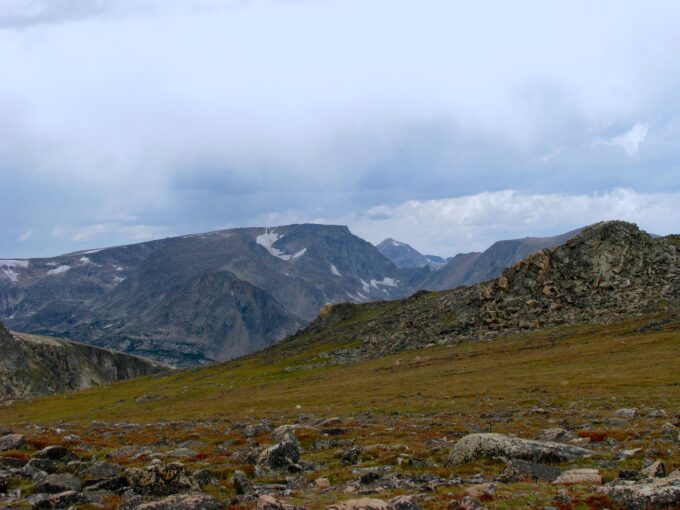
Alpine meadows in Greater Yellowstone. Photo: Jeffrey St. Clair.
There’s a boiling controversy right now over the future of hundreds of thousands of acres of Forest Service lands abutting Yellowstone National Park and comprising the core of the Greater Yellowstone Ecosystem. These lands are primarily in the Gallatin and Madison Ranges which are facing increasing pressures from a variety of development and recreational pressures.
The vast majority of the area is protected by the Wilderness Study Areas in Senator Lee Metcalf’s Wilderness Study Act of 1977 which mandates that they be managed under the provisions of the Wilderness Act of 1964 until Congress decides to either designate them as “Big W” Wilderness Areas or release them for multiple abuse.
By law, that means no mechanized access or use is allowed there any more than it’s allowed in Montana’s other much-prized wilderness areas such as the Bob Marshall, Great Bear, Selway-Bitterroot, Absarokee-Beartooth and Lee Metcalf Wilderness.
Additionally, more than 20 years after Metcalf’s visionary law, President Clinton authorized the Roadless Rule which addresses the roadless lands outside the Wilderness Study Areas. The goal was to preserve those quickly vanishing areas of federal public lands that had not yet felt the degradation of the bulldozer’s blade.
Taken together, it comes to a very significant 240,000 acres of virtually pristine lands with incredible value as intact forest ecosystems for wildlife, protected headwaters for fish, our best and cheapest way to pull greenhouse gases out of the atmosphere, and clean drinking water for Montanans. Those lands run from the Park all the way to Bozeman and Livingston and are the headwaters for the famed Yellowstone, Gallatin, and Madison Rivers.
The source of the controversy is the Gallatin Conservation and Recreation Act being promoted by three big money groups: The Greater Yellowstone Coalition, The Wilderness Society, and the Montana Wilderness Association (now doing business as Wild Montana). Ironically, they use the name, but they’ve changed their game, and under their proposal these lands would be chopped up and opened for motorized, mechanical, and industrial “wreckcreation” and even more logging by the rapacious timber industry.
They claim that commercial logging will be prohibited, but they neglect to tell the public that their loophole is big enough to drive a logging truck through and allows the Forest Service to bulldoze logging roads in watershed protection areas, if the Forest Service claims it has to log for “forest health.” The dirty little secret is that now almost every Forest Service logging proposal is for “forest health” or as retired Forest Service Gardiner District Ranger Hank Rate called it: “No tree left behind.”
The proposal is facing significant opposition not only from long-time wilderness advocates but the former Superintendent of Yellowstone Park and a number of former staffers and board members of the groups. Since the proposal has no sponsor and has not been introduced in Congress, “act” is perhaps the most pertinent word in the title since they act like they’re protecting wilderness, but are actually throwing wilderness quality lands open to degradation from any number of uses and abuses.
The simplest, most sensible, and least controversial way forward is to first designate the existing Wilderness Study Areas as full-on Wilderness since, by law, they’re already being managed as wilderness. If they really want to protect the Greater Yellowstone Ecosystem, they would likewise support wilderness designation for all the remaining roadless lands as does the Northern Rockies Ecosystem Protection Act, S. 1531, which is a bill before Congress. NREPA has 12 sponsors in the Senate and protects the vital biological corridors connecting the ecosystems in this region and ensures the continued existence of threatened animals such as wolverines, lynx, and grizzly bears for future generations.
Please ask your member of Congress to cosponsor the Northern Rockies Ecosystem Protection Act, S. 1531.
The post First Things First: Designate all Greater Yellowstone Wilderness Study Areas as Wilderness appeared first on CounterPunch.org.
This post was originally published on CounterPunch.org.